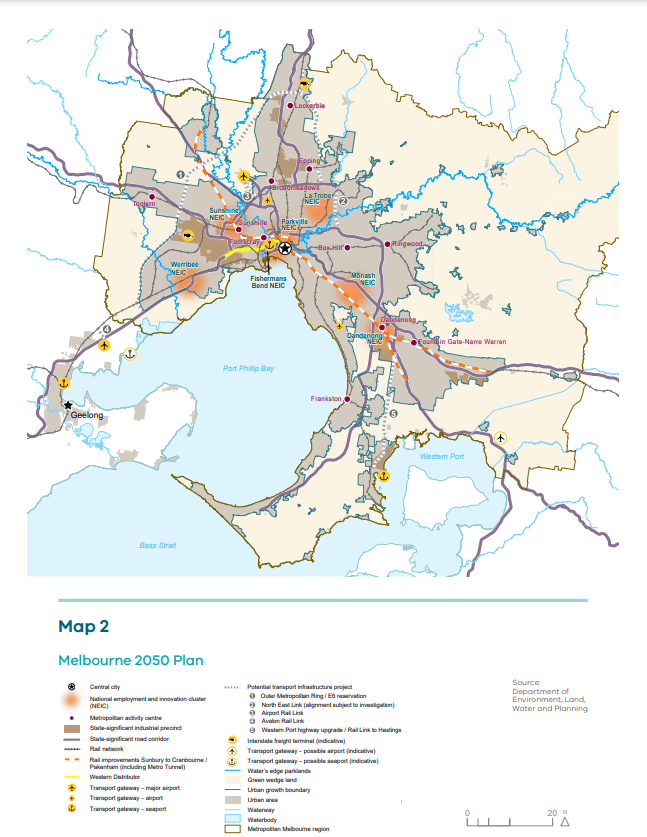Melbourne was founded in 1835 and was officially declared a city by Queen Victoria in 1847. Read about Melbourne’s strategic planning history
Melbourne was founded in 1835 and was officially declared a city by Queen Victoria in 1847. Today, Melbourne is consistently recognised as one of the world’s most liveable cities and has a long history of strategic planning.
Strategic planning began with Robert Hoddle’s 1837 street layout, known as the ‘Hoddle grid’. This layout is what we know today as Melbourne’s central business district and has influenced the layout of modern day Melbourne.
By the early 1910s, concerns about the dilapidated parts of the city prompted major public inquiries by the Joint Select Committee on the Housing of the People in the Metropolis (1913-14) and a Royal Commission in 1915. These events led to the development of Melbourne’s first strategic plan in 1929. The Plan, named the Plan for General Development of the Metropolitan Town Planning Commission, proposed a planning scheme to prevent ‘misuse’ of land and protect property values. It also highlighted traffic congestion, the distribution of recreational open space and the haphazard intermingling of land uses.

The 1929 plan was not implemented and it was only after the Second World War in the early 1950s that the planning system as we know it today commenced with the Melbourne Metropolitan Planning Scheme 1954 – Report and its associated Survey and Analysis volume.
Over the sixty years since this planning effort began more than 21 policies or plans have been produced. The documents below outline key metropolitan planning policies and strategies that have helped to shape Melbourne’s development.
PREVIOUS STRATEGIC PLANS
A Plan for General Development (1929)
Presents a planning scheme to prevent ‘misuse’ of land and protect property values. It also identified a number of issues such as traffic congestion and recognised the value of Melbourne’s waterways as an open space network.
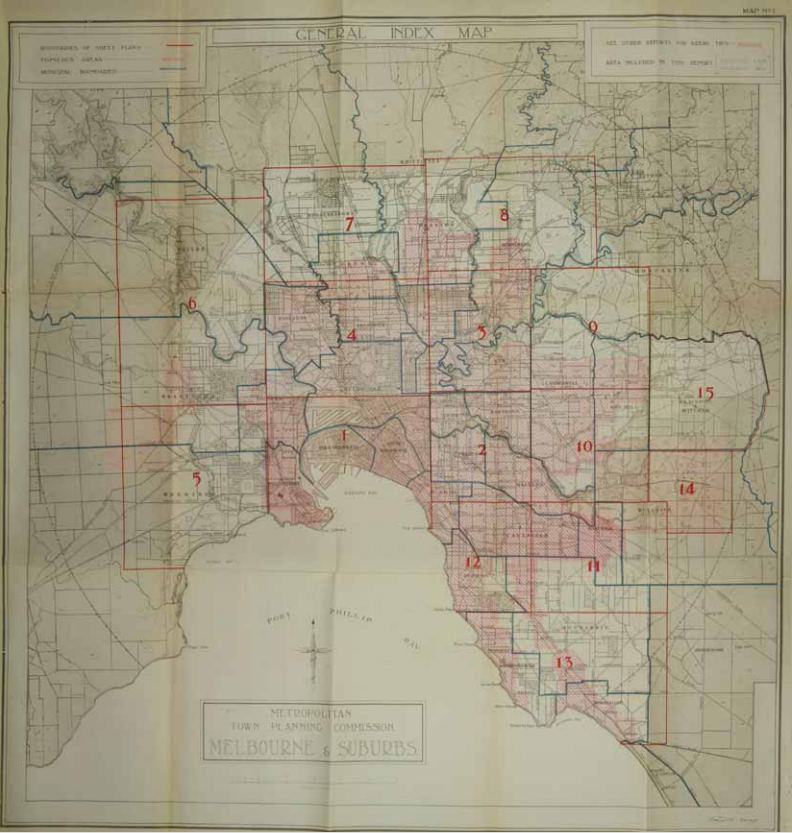
Melbourne Metropolitan Planning Scheme 1954 – Survey and Analysis
This document is a complimentary document to the Melbourne Metropolitan Planning Scheme Report 1954 Report. It presents a detailed account of the studies which formed the factual basis of the 1954 report and proposed planning scheme.
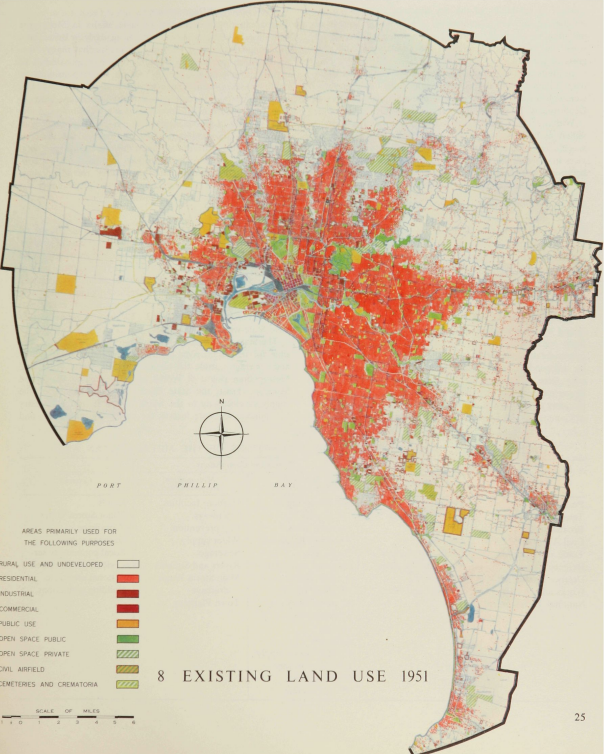
Planning Policies for the Melbourne Metropolitan Region (1971)
Introduced long-term conservation and development policies through growth corridors and what we now call green wedge principles, and contained outward growth to a limited number of areas on the edge of the city. It looked at the physical constraints around Melbourne for the first time.
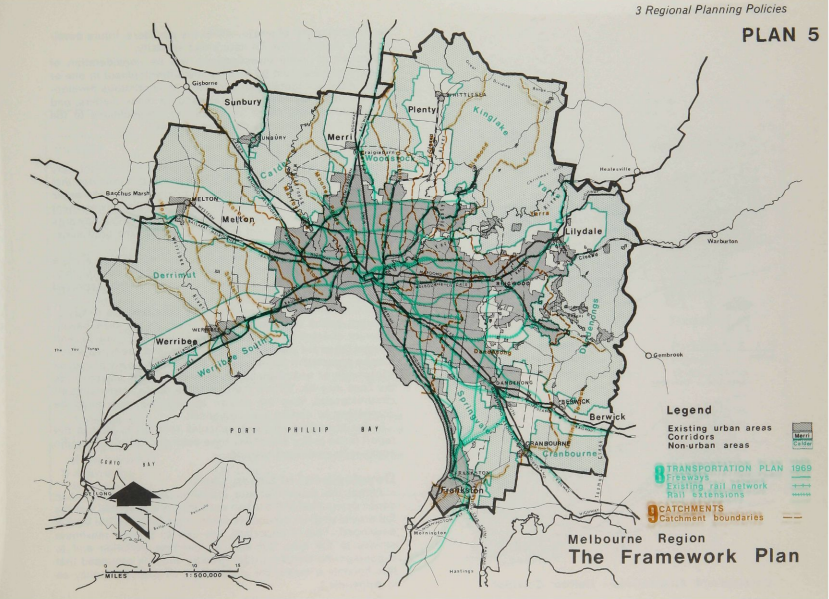
Report on General Concept Objections (1974)
Examines the submissions and objections to the Planning Policies for the Melbourne Metropolitan Region.
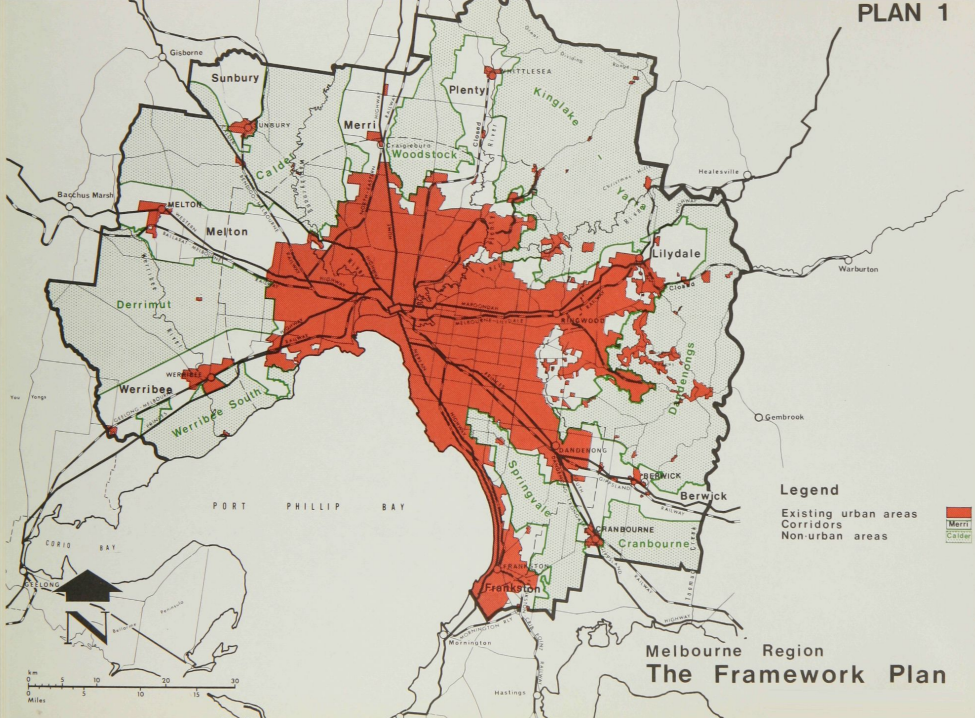
Metropolitan Strategy Implementation (1981)
Encouraged development in existing areas, and sought to concentrate housing, transport, employment and community facilities in highly accessible places.
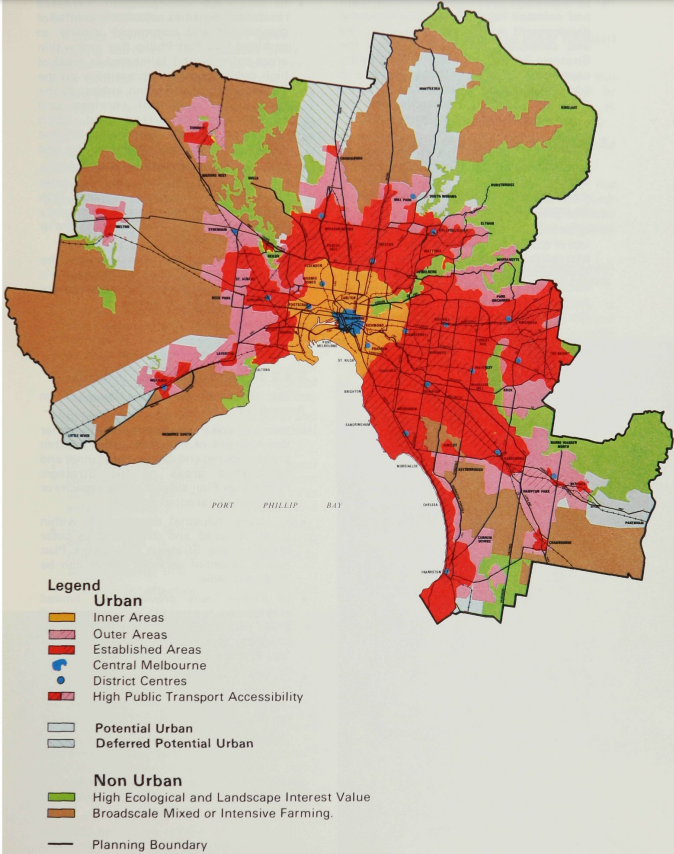
Living Suburbs (1995)
Focuses on relationships between central city, suburban Melbourne and adjacent regional areas providing a framework for integrated metropolitan development to enhance Melbourne’s environment and liveability, and managing infrastructure and urban development.
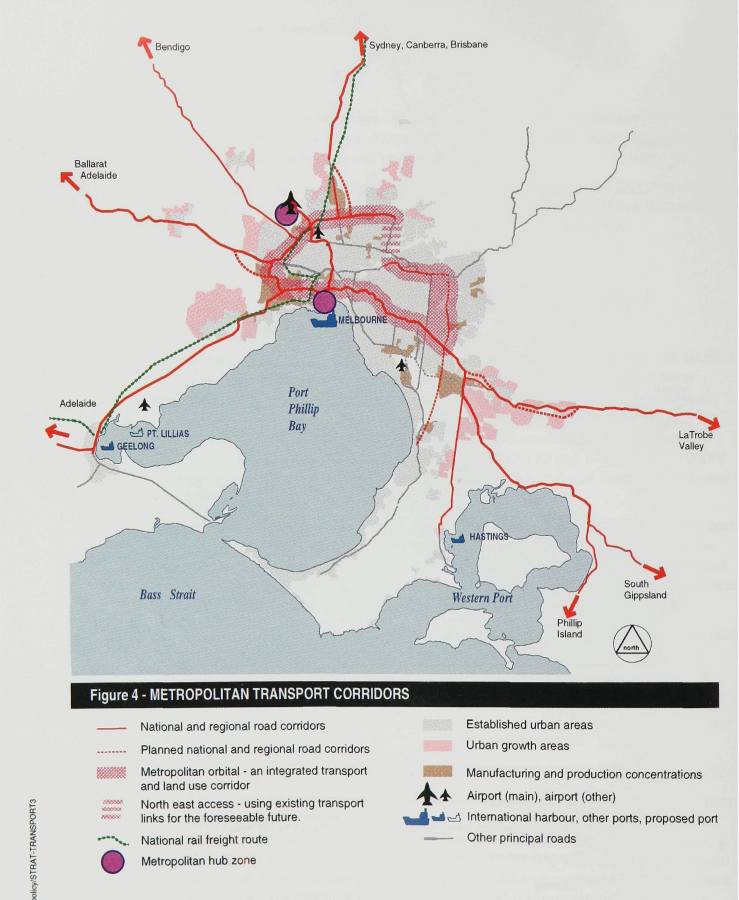
Melbourne 2030: Planning For sustainable growth (2002)
Quantified the task of urban consolidation. It also introduced an Urban Growth Boundary.
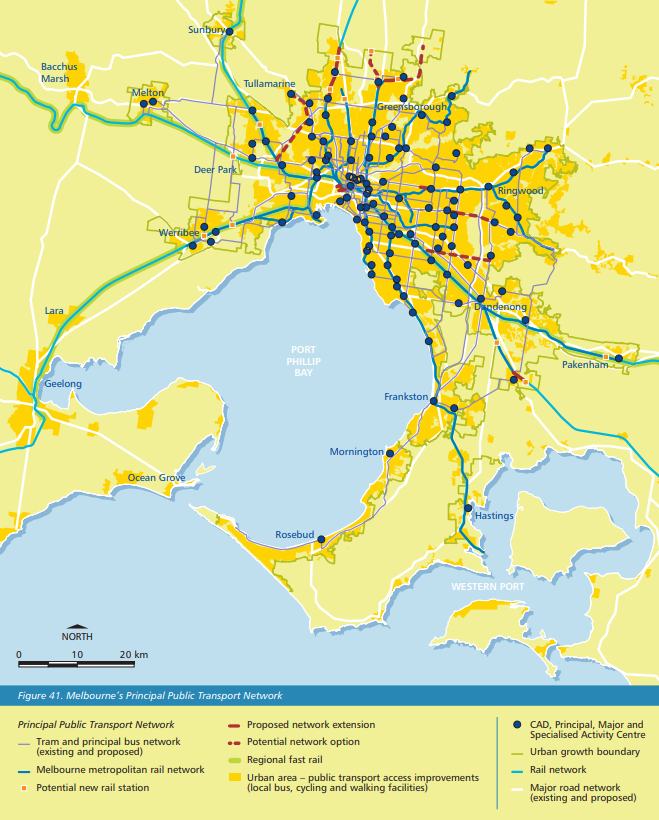
Melbourne 2030 a Planning update – Melbourne@5Million (2008)
Outlined policy implications from the Victorian in Future 2008 growth projections.
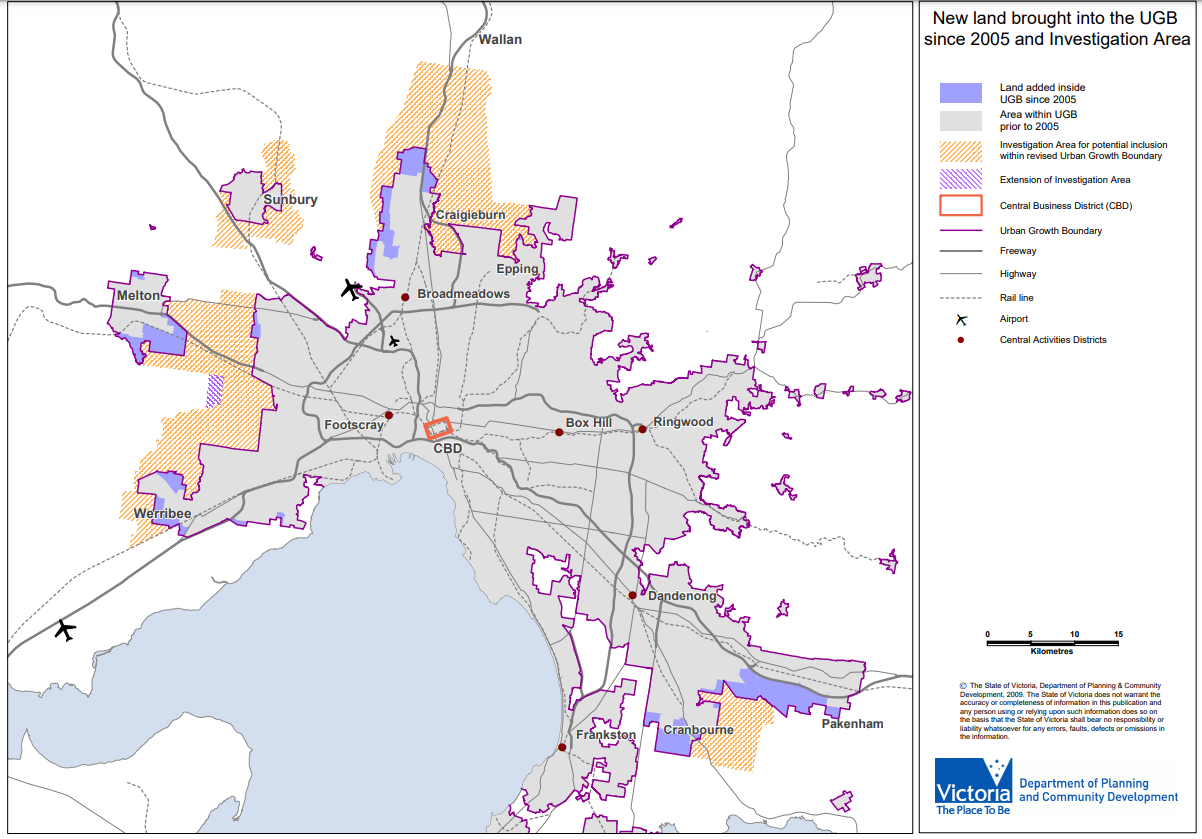
Delivering Melbourne’s Newest Sustainable Communities (2009)
Outlined an integrated approach to land use, transport and environmental initiatives, including the Urban Growth Boundary and Growth Areas Infrastructure Contribution.
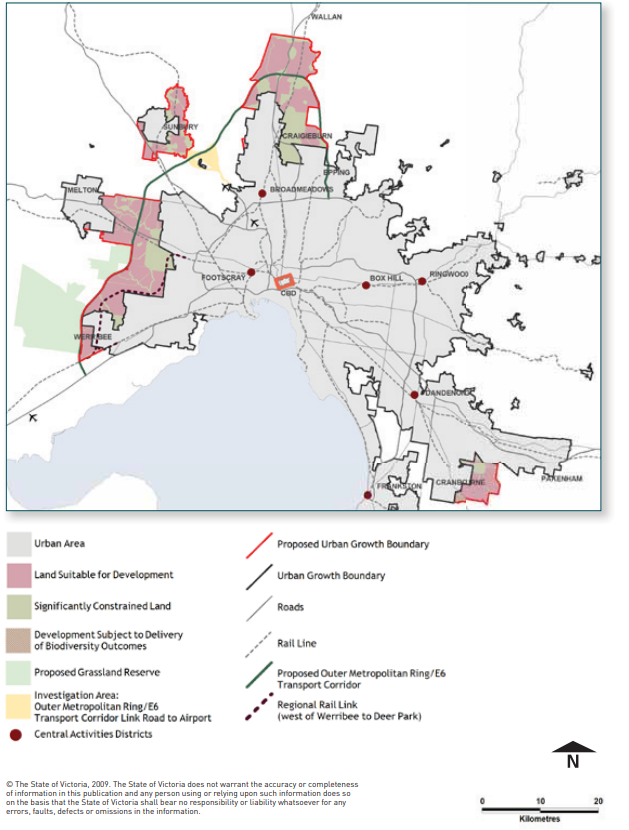
Plan Melbourne 2014
Integrated long-term land use, infrastructure and transport planning to outline a vision for Melbourne’s growth to 2051.
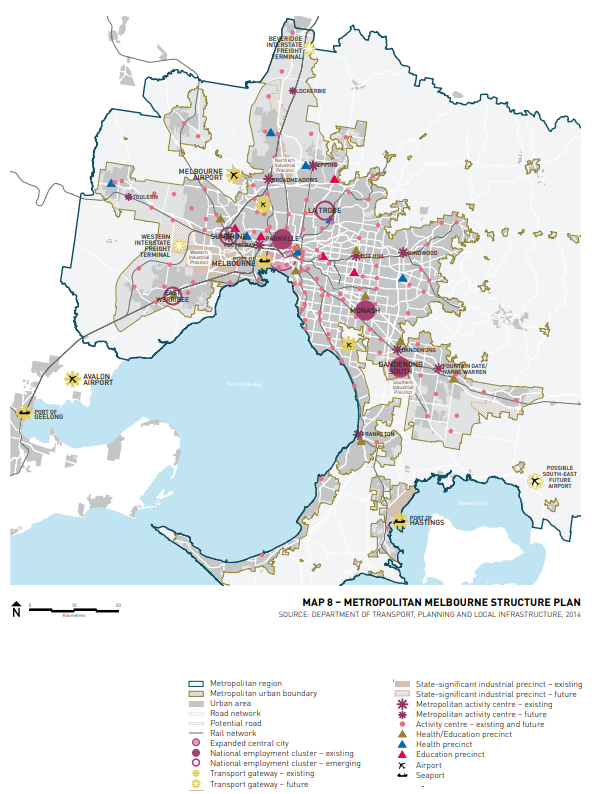
Plan Melbourne 2017 – 2050
The current guide for Melbourne’s growth and development for the next 35 years.
